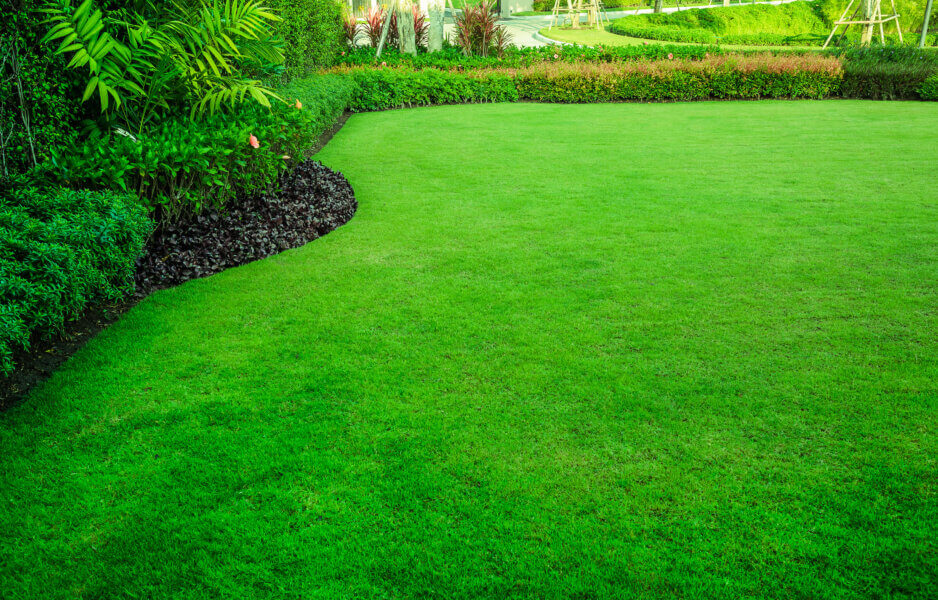
Dethatching and Aeration
Dethatching and aerating are among the most important lawn care tasks. Both of these methods improve the overall health of your lawn, enabling it to thrive throughout its primary growing period. Here in Florida, lawns tend to grow well from spring all the way through to fall. Because of the the climate, grass doesn’t go dormant for as long of a period as in some other parts of the country where snow and frost are more common.
Here’s what you need to know about aeration and dethatching so you can keep your lawn at its best.
Dethatching Grass Maintenance Basics
Thatch is a buildup of grass clippings, twigs, fallen leaves, and other debris. It tends to accumulate around the bases of the grass blades near the soil. While a small amount of thatch is healthy for your grass, protecting it from the elements, too much thatch can actually be harmful. When thatch is thick and heavy, it can choke off your lawn, blocking sunlight and moisture. This can leave your lawn with dry, sparse patches where the grass is slowly dying off.
When to Dethatch Your Florida Lawn
The best time to dethatch is when your grass is actively growing. In most cases, this means dethatching in early spring and again in early fall. The spring session will clear out any debris that has built up over the winter, priming your lawn to grow and thrive as the weather warms up. Dethatching again in the fall gets rid of any summer debris while still allowing your lawn time to recover from the process before winter hits. If at any time during the summer you notice heavy thatch forming again to the point where you can no longer see the soil underneath, you may need to add an extra dethatching session to keep things clear.
How to Dethatch Your Lawn
Although you can find dethatching equipment for this purpose, it is better for your lawn to dethatch it by hand. Mechanical dethatching can be incredibly hard on your lawn and can actually do more harm than good. Instead, pick up a dethatching rake from your local gardening or home improvement store, and get ready to get to work.
Starting from one corner of your lawn, work the rake down under the thatch to gently pull it up and away from the grass blades. Work your way across your lawn in a methodical pattern to avoid inadvertently skipping any areas. You can use the removed thatch in compost, or simply throw it away with other garden waste once you are finished.
All About Grass Aeration Lawn Care
Aeration involves pulling up plugs of soil to loosen up the ground underneath your lawn. Over time, the underlying soil can become compacted. This tight pressure makes it difficult for moisture and nutrients to reach your lawn’s roots. Aerating the soil removes chunks of it so that the remaining soil can loosen and spread so that moisture and nutrients can get through more easily.
When to Aerate Your Lawn
As with dethatching, the best time to aerate your Florida lawn is during its active growth period. For most grass types that grow well in the area, that means in the spring and early fall. However, if your lawn sees a lot of traffic, like if you host frequent outdoor gatherings or practice sports in your yard, you may need to aerate more frequently. If the soil doesn’t have much give to it when pressed on, it is likely compacted and needs to be aerated.
How to Aerate Your Lawn
Many home and garden care supply stores offer aerators for purchase or rent. Buying your own equipment can be incredibly costly. Even if you rent the machine to save money and the hassle of storage, you’ll still have to do all of the hard work. The easiest way to aerate your lawn is to hire a professional to get the job done right.
Fill in Patchy Grass Areas with Fresh Sod and Water
If you have been a bit lax in your dethatching and aeration efforts, your lawn may have seen better days. Sod can fill in the gaps and restore your lawn to better health. We are proud to provide a variety of sod types that grow well here in Florida. Contact us today to learn more.